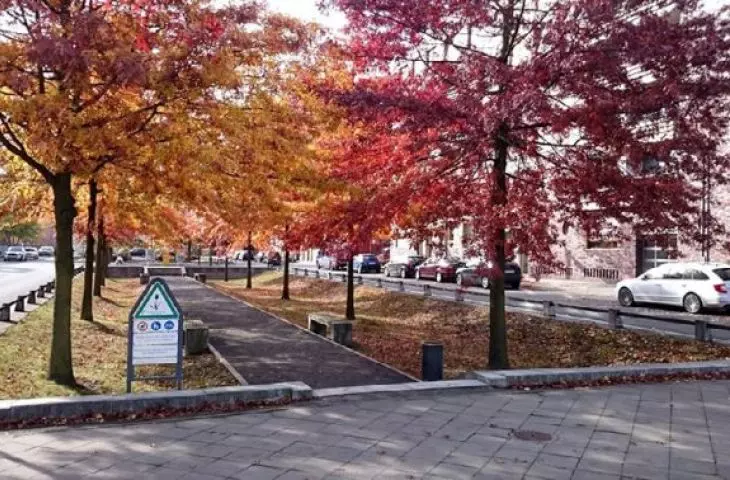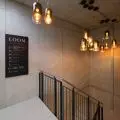There's no fooling ourselves. Our cities are simply broken. What also won't change is that climate change will continue, and with it droughts, downpours and extreme weather events. We are not ready for it, but how do we change it?
The report "Blue-Green Infrastructure for Urban Climate Change Mitigation - Strategic Tools" is the result of a collaboration between Ecologic institute and the Sendzimir Foundation. The document, developed by an international team, focuses primarily on how cities should adapt to climate change so that they can avoid problems associated with extreme weather conditions today.
Based on a review of strategic instruments that cities such as Berlin, Leipzig and Barcelona have put in place, the authors seek to create recommendations for solutions that will help Polish cities introduce solutions to support the development of blue-green infrastructure.
NBS and blue-green infrastructure
For the report's authors, two definitions are important. Nature-based solution (NBS), i.e. the introduction of solutions based primarily on nature, and the term blue-green infrastructure, indicating the fact that greenery and water provide services to city residents ( Joanna Rayss and Zbigniew Szkop spoke about this in A&B). All solutions recommended in the report are directly related to these two concepts.
What solutions do the report's authors propose?
first an audit and a plan
The basis for using the recommended solutions is the creation of an integrated master plan, which will take into account top-down and bottom-up perspectives, social, economic, transportation and cultural aspects, as well as allow for multi-stage project evaluation in the form of audits.
The creation of a strategy should be the first point to begin the transformation of cities for climate change adaptation. However, this doesn't just mean enacting a local master plan, but also creating a concept for each area, as Berlin has introduced in an interesting way.
Berlin strategy
© Ecologic Institute & Sendzimir Foundation
synergy, support of experts and residents
An important part of making changes for climate change adaptation is the proper involvement of local communities and experts. Both the creation of estate plans and decisions on changes should include discussions with residents - after all, they are the first users of the spaces in question. It is also important to take into account expert recommendations and studies made by specialists. The authors of the report also point out the need for direct integration of the NGO and business sectors in cooperation with residents and local governments.
A change in thinking about water
The basis for relieving the burden on sewage systems and improving retention should be the integration of water management beyond conventional drainage systems. As part of nature-based solutions, the authors distinguished three types of waste water activities:
- Preventive actions - reducing impervious surfaces and using green infiltration ditches.
- Structural actions - creation of retention ponds and reservoirs, as well as introduction of rain gardens and small artificial wetlands.
- Adaptive measures - introduction of green roofs and walls, reconstruction of semi-natural shorelines.
The introduction of such solutions will relieve the burden on sewage systems by "leaving" water in nature.
Rain gardens can be an important solution in urban reform
© Ecologic Institute & Sendzimir Foundation
greenery protection
In terms of the protection and design of new green areas, the report's authors point to an interesting example of the introduction of a biotope area factor (BAF) used in Berlin. This allows defining minimum ecological standards for new construction projects and renovation and construction works. Calculating the BAF makes it possible to determine how much of the space around a development is biologically active. The introduction of such a measurement system allows a better assessment of the preservation of biologically active space.
The values of the coefficient for selected forms of land use, which determines to what extent a given area is biologically active
© Ecologic Institute & Sendzimir Foundation
example of BAF calculation
© Ecologic Institute & Sendzimir Foundation
The report's authors also point to the need to increase the area of green space, in this case pointing to Barcelona. This city has embarked on a project to increase green infrastructure by reclaiming block interiors and courtyards, creating gardens and parks, street plantings or greening roofs, facades and fences.
Estimated growth of green infrastructure in Barcelona between 2015 and 2030
© Ecologic Institute & Sendzimir Foundation
how to finance it?
There is also the question of how the proposed green space solutions should be financed? When it comes to encouraging individual owners and businesses, it is important to create attractive tax breaks. Working out conditions for improving micro-retention through rain gardens or preserving biologically active area would help relieve the budget in the long term and reduce the cost of operating water infrastructure. A comparable project has so far been introduced in Kalisz(see here). A similar system could involve appropriate funding for blue-green infrastructure projects.
need for change
The recommendations outlined above are important elements of adaptation and mitigation to climate change, which are part of the UN's Sustainable Development Goals. A qualitative policy towards water and greenery must not be the product of chance, but a concretized plan to ensure that our cities thrive by creating good places to live.
© Ecologic Institute & Sendzimir Foundation

































